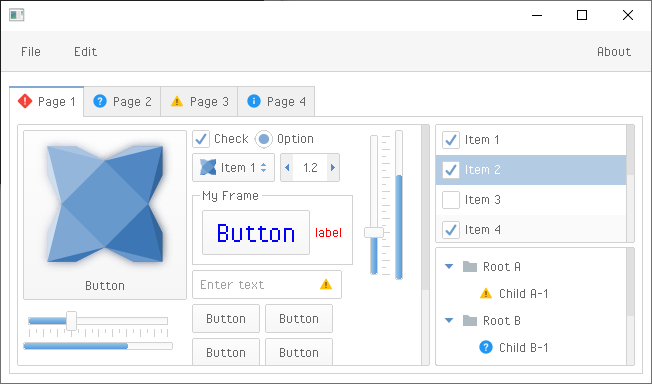haxeui-heaps
haxeui-heaps is the Heaps backend for HaxeUI.

Installation
haxeui-heaps has a dependency to haxeui-core, and so that too must be installed. Once haxeui-core is installed, haxeui-heaps can be installed using:
haxelib install haxeui-heaps
Heaps
haxeui-heaps also has a dependency on Heaps, this can be installed via haxelib using the following command:
haxelib install heaps
Important: If you want to use heaps in a desktop applicaiton (ie, via HashLink) then you also need install the SDL libraries for heaps using the following command: haxelib run install hsdl
Usage
The simplest method to create a new native application that is HaxeUI ready is to use the HaxeUI command line tools. These tools will allow you to start a new project rapidly with HaxeUI support baked in. To create a new skeleton application using haxeui-heaps create a new folder and use the following command:
haxelib run haxeui-core create heaps
If however you already have an existing application, then incorporating HaxeUI into that application is straightforward:
Haxe build.hxml
If you are using a command line build (via a .hxml file) then add these lines:
-lib heaps
-lib haxeui-core
-lib haxeui-heaps
Important: If you are using heaps in a desktop applicaiton (ie, via HashLink) then you also need include the SDL library into your application with the following: -lib hsdl
Toolkit initialisation and usage
Initialising the toolkit requires you to add this single line somewhere before you start to actually use HaxeUI in your application:
Toolkit.init();
Heaps specifics
As well as using the generic Screen.instance.addComponent, since HaxeUI components in haxeui-heaps extend from h2d.Object it is also possible to add components directly to any other Heaps s2d object (eg: hxd.App.s2d).
